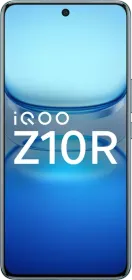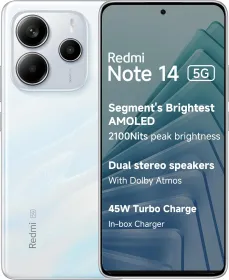TL; DR
- On March 13, Google pushed the Android 16 Beta 3 update to users enrolled in the Beta Program. While the first two betas weren’t quite there yet, the third beta has reached platform stability.
- Google has confirmed that the next major Android release will take place in Q2 2025 (the second quarter of the calendar year).
- Android 16 will come with a lot of new features, including an updated Privacy Sandbox, new Health Connect APIs for supporting health records, and the ability to resize and scale apps to fit larger screens (like those on foldables and tablets).
As we near Android 16’s official launch, updates about the new features included in the stable beta versions are surfacing on the internet. While the company moves ahead with its hardware launches by a couple of months, it is following a similar approach for the Android 16 launch in 2025 (so that the new operating system can be available in time for the new Pixel smartphones).
That said, here’s everything we know about Android 16, including its release timeline, the devices that can run the Android 16 beta versions, and the confirmed features that will arrive with the new operating system.
Android 16 Release Timeline

On March 13, Google pushed the Android 16 Beta 3 update to users enrolled in the Beta Program. While the first two betas weren’t quite there yet, the third beta has reached platform stability, indicating that the version’s application programming interfaces (APIs) and app-facing behaviors are finalized.
Once platform stability is reached, the focus shifts to bug fixes and performance improvements rather than adding new abilities and features. In addition, this is the time when developers start their final testing, streamlining their apps with all the protocols and systems in place.

Regarding the Android 16 release date, we have plenty of information to go by. For instance, Google has confirmed that the next major Android release will take place in Q2 2025 (the second quarter of the calendar year). Further, the company will also release a minor Android API in the fourth quarter, bringing some new features, optimizations, and general bug fixes.
Recent leaks also suggest that a stable version of Android 16 could roll out in June 2025 (after which Samsung could release its Galaxy Z Fold 7/Flip 7 based on One UI 8.0 in July).
Also Read: Five Android 16 Features That Could Change The Way You Use Your Smartphones
Android 16 Compatible Devices

For now, Android 16’s beta versions are available on Google’s Pixel devices, including the Pixel 6, Pixel 7, Pixel 8, and Pixel 9 lineup. The Pixel Fold, Pixel Tablet, and Pixel 9 Pro Fold are also eligible for the beta updates.
Following its release, Android 16 should be available on more devices than ever. In the last few years, smartphone manufacturers have started providing two to three years of major operating system updates to their entry-level and mid-range devices, with Samsung and Google leading the way.
As a result, 2025 could be the year when the latest Android update should be more accessible than ever. Of course, the release timeline could vary based on the OEM’s priorities, but in general, flagships should still be among the first smartphones to get a stable Android 16 update (with or without a custom user interface on top).
Android 16 Confirmed Features
Live Updates

One of the most notable features of Android 16 is Live Updates, a new type of notification that helps users track or monitor the progress of an ongoing activity, like a food order or a cab booking.
A similar feature on iPhones, called Live Activities, showcases real-time progress via a dedicated section on the lock screen or Dynamic Island (on supported iPhones). However, on Android, Live Updates will appear as a new notification style.
While some apps have already started showing notifications in a similar manner, Live Updates will streamline the implementation and make it available for all developers. Further, Android will also float the Live Updates on the lock screen.
Cloud Compilation
Android 16 will also offer a new feature called Cloud Compilation. On entry-level devices with a weak processor, the feature will outsource app compilation (loading several app artifacts) to the Google Play Store (cloud), improving the app installation time.
While Android flagships can handle app artifact generation entirely on the device (thanks to their powerful chipsets), the task could be a bit tedious for low-end devices, which is where the Cloud Compilation feature steps in.
Though the feature decreases an app’s installation time, it could increase its file size (as the installation will require preprocessed artifacts from the Play Store). The feature isn’t live yet, but Google could configure it soon. Further, Cloud Compilation could be an optional feature when it arrives.
Also Read: 10 Best File Sharing & Transfer Apps between Android, iOS, Mac & Windows PCs
Improved Adaptive Refresh Rate
Although the adaptive refresh rate went live on the Pixel 9 series, Android 16 will feature new APIs, making it easier for more add developers to integrate the feature. As a result, the upcoming Android version will enable more apps to utilize the feature that adjusts the refresh rate based on the content on the screen; it uplifts the experience and saves a phone’s battery at the same time.
New Photo Picker APIs
Android 16 will come with new photo picker APIs that give the section an app-like theme. In other words, the photo picker section will look like it is a part of the app that has invoked it. For this, Google will give developers more control over its design and usability. Google will also add the ability to search in the photo picker.
Android 16 Adds Support For A New Codec

Called APV 422-10 Profile, the new professional video codec provides high-quality videos (almost lossless) while occupying 20% less storage than the existing codecs. Some of the codec’s features include support for a high bitrate range for up to 8K resolution content, various chroma sampling formats, multi-view video, and HDR10+ format.
A New Predictive Back Button
The upcoming Android version will add predictive back support for three-button navigation. In Android 16, pressing and holding the back button will invoke the predictive back system (accompanied by an animation), indicating where the back button takes users.
Also Read: Nothing OS 3.0 Exclusive: First Look at all New Features & Upgrades
The Option To Block AI Tools
According to official documentation from Google, Android 16 will feature a new API allowing developers to turn off AI writing tools. While the tools are helpful when writing emails or text messages, they aren’t useful when filling out text or number-based fields, like a password or a phone number.
Batter Personal Device Tracking Via Find My Device
Android 16 will feature a new RangingManager, allowing a device to estimate the distance and angle of another device (like a personal belongings tracker). Given that the API supports BLE channel sounding and Ultra-Wideband technologies, Google can use it to improve how users track their devices (similar to how iOS allows users to track their AirPods, AirTags, etc.).
Camera-Related Updates
First and foremost, Android 16 will add the ability for third-party apps to control the exposure to an extent (while the automatic exposure algorithm will still work in the background). The apps should also let users control exposure time and automatic exposure or ISO and automatic exposure.
For those using third-party video recording apps, Android 16 will support tint adjustments and fine color temperature (for improving the white balance). Additional features include a standard protocol for Motion Photos and support for HEIC Ultra HDR images.
There are a couple of other new features as well, including an updated Privacy Sandbox, new Health Connect APIs for supporting health records, and the ability to resize and scale apps to fit larger screens (like those on foldables and tablets). Then, there are a few accessibility features. For instance, the operating system can differentiate between the text and its background and change the latter’s color.
You can follow Smartprix on Twitter, Facebook, Instagram, and Google News. Visit smartprix.com for the latest tech and auto news, reviews, and guides.
































